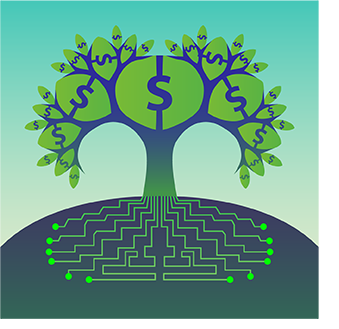 "Big data" is widely discussed these days, among both businesses and consumer groups. As the volume of data that corporations compile increases exponentially, more and more organizations are leveraging predictive analytics technologies to transform that information into intelligence—and, ultimately, value—for the company. A familiar example is the way in which certain online stores suggest items a particular consumer might be interested in purchasing, based on an analysis of his or her prior buying behavior.
"Big data" is widely discussed these days, among both businesses and consumer groups. As the volume of data that corporations compile increases exponentially, more and more organizations are leveraging predictive analytics technologies to transform that information into intelligence—and, ultimately, value—for the company. A familiar example is the way in which certain online stores suggest items a particular consumer might be interested in purchasing, based on an analysis of his or her prior buying behavior.
Today, many companies are grappling with how to harness their vast data stores, exploring the potential of predictive analytics to support a variety of corporate functions. One department that may soon be revolutionized by predictive analytics solutions is credit and collections. Analytics software can help accounts receivable (A/R) teams increase cash flow by not only prioritizing which customers are contacted by collections staff, and when, but also recommending a method of contact that is most likely to help the organization get its invoices paid fast.
These same tools can help treasurers, who bear the burden of predicting cash flows months in advance. A study conducted by the Aite Group showed that most treasurers are not yet taking advantage of this opportunity. When asked about their methods of cash forecasting, 60 percent of the survey's respondents said they simply take their current A/R balance, apply an arbitrary percentage, and add that increase or decrease into the previous period's cash forecast. When the credit-and-collections function can provide treasurers with more accurate projections of the cash flows expected from their collections activities, treasury can produce more realistic cash forecasts.
Recommended For You
Collections in the 21st Century
Historically, it has been common practice for corporations to prioritize collections activities using call lists generated by dialers or using some combination of the invoice age and the amount outstanding or overdue. These practices are imprecise, and so they are not particularly effective. According to a recent study by McKinsey & Co., 70 percent of all collections-related phone calls are made to customers that would have paid even if the company hadn't contacted them.
Predictive analytics offers an alternative approach for companies that want their collections activities to be more targeted. These technologies can apply a statistical model to a company's historical A/R data, as well as information from external sources, to determine each invoice's "collection risk," which is the probability that it will become past-due at some point in the future. It makes sense to use a statistical model to predict specific customers' probable future payment behaviors; determining probabilities is what statistical models do. Sophisticated predictive analytics solutions are able to assign a precise collection-risk score to each of a company's customers, then use that score to prioritize the collections team's contact list and determine what types of activities they should engage in with each customer.
While a competent human collections agent will notice significant changes in a customer's payment behavior, such as starting to let invoices slide past-due before paying them, an analytics application built on a statistical model can detect subtle behavioral shifts that even the best A/R staff is unlikely to catch. These technologies incorporate insights that the vendor has garnered, in some cases, by drilling into decades' worth of payment activities across an array of industries. As a result, they might be able to flag a customer as having an elevated collection risk if payment habits shift only slightly.
 For example, suppose you sell to an organization whose payments always come in within the 0-to-30-days past-due range. The company has always paid slightly late, but usually within two to three days of an invoice's due date. Then, six months ago, it started paying five days after the due date. Three months later, it started paying 10 to 12 days late. A good collector might pick up on this change, but an analytics application is certain to notice. Not only that, but most predictive A/R technologies can combine an individual customer's payment history with information about the industry. If the whole industry is starting to pay more slowly, the credit-and-collections software will likely make this customer an even higher priority.
For example, suppose you sell to an organization whose payments always come in within the 0-to-30-days past-due range. The company has always paid slightly late, but usually within two to three days of an invoice's due date. Then, six months ago, it started paying five days after the due date. Three months later, it started paying 10 to 12 days late. A good collector might pick up on this change, but an analytics application is certain to notice. Not only that, but most predictive A/R technologies can combine an individual customer's payment history with information about the industry. If the whole industry is starting to pay more slowly, the credit-and-collections software will likely make this customer an even higher priority.
Predictive analytics applications can apply the same principles even when invoices are not past-due. Suppose you've had a customer for three years that has always cut checks once a month to clear out all its outstanding invoices. The customer currently has 50 invoices outstanding: 40 due in a few days and 10 due two weeks later. In the past, the customer would have sent a check for all 50 at once, but instead this month it pays only the 40 that are due now. The other 10 invoices are not yet due, and they may well be paid by their due date. But if this shift in payment behavior continues, it may indicate that the customer has started to manage its cash more carefully, and a predictive analytics solution may elevate the priority of the collections team's contact with this customer.
Collection Risk vs. Credit Risk
"Collection risk," as determined by a predictive analytics solution, is different from what is commonly known as "credit risk." A company's credit-risk profile reflects the financial health of the corporation and the likelihood that it will remain in business, which only indirectly correlates with its likelihood of paying business debts.
Many businesses subscribe to credit bureau data feeds and then use this data to build judgmental scorecards for their current and prospective customers. The scorecards incorporate information such as the company's industry classification, years in business, performance indicators from its financial statements, credit bureau scores, etc. The model rates customers on each element of the data and provides a total credit-risk score for each customer. As an alternative, some corporations simply purchase credit-risk scores for current and prospective customers from credit bureaus.
Either way, the company classifies its customers according to their credit-risk scores and uses this classification to support decisions about the credit limits and terms it will extend. The scores are taken into account when the company is determining whether to accept and ship new orders to a customer. They're also likely to come into play anytime the company is reviewing the customer's credit limit, whether it does so on a regular basis or in response to a particular event.
The company also might use a customer's credit-risk classification in determining how aggressive a collector should be during a call with the customer—but corporations usually do not use credit-risk scores in determining which customers to call and when to call them. One reason is that although these scores can be effective in determining the overall creditworthiness of a business, they are not very effective at predicting future payment habits for invoices that have already been billed. It's a subtle point, for sure, but it can make a huge difference in the effectiveness of collections efforts.
Creating an Effective Collections Process
So, how does a corporation build a statistical model that will accurately predict the probability that a specific current invoice will become past-due in the future? Some companies employ their own statistical modeling teams; their statisticians build proprietary models to predict customers' collection risk. Other organizations rely on scoring service providers to determine the statistical collection risk for each customer on a monthly basis. These statistical scoring providers are able to generate remarkably predictive models by analyzing the effects of behavior patterns on payment habits using a tremendous amount of data gathered over many years. But unlike credit-risk scores, statistical collection-risk models incorporate a company's own data; this makes them extremely accurate.
These models are so predictive that they can dramatically improve the effectiveness of the collections staff. For example, many companies use their collection-risk scores to segment their open invoices, with almost 100 percent accuracy, into one bucket that represents some collection risk (typically about one-third of all invoices) and another bucket that represents negligible collection risk (about two-thirds). Rather than calling every customer with an open invoice, collections staff can focus on the one-third with the highest probability of non-payment, while the remaining two-thirds receive less resource-intensive communications, such as automated emails.
Sophisticated companies take this customer segmentation a step further, prioritizing collections activities based not only on the probability of delinquency, as determined by collection-risk scores, but also by the amount of cash at risk with each customer. "Cash at risk" is simply the probability of delinquency multiplied by the dollar value of outstanding invoices.
Suppose a supplier has two customers with unpaid invoices that are a few days past their due date. Customer A owes $20,000, and its collection-risk score indicates an 80 percent probability that the invoice will pass 30 days past-due, so the supplier's cash at risk with this customer is $16,000 ($20,000 × 80%). Now, suppose Customer B owes the same supplier $100,000, but its collection-risk score gives it only a 5 percent probability of becoming 30 days past-due. The supplier's cash at risk with Customer B is only $5,000 ($100,000 × 5%). The company certainly should proceed with collections activities on both customers, but to get the most out of its limited resources, it will want to prioritize and collect differently from Customer A than from Customer B.
Never Stop Fine-Tuning
I mentioned earlier that a recent McKinsey survey found that 70 percent of all collections calls go to customers which are not actually at risk of delinquency. A risk-based collections process that utilizes predictive analytics technologies can save companies from making the 70 percent of calls that are unnecessary.
Does this sound too good to be true? The great thing about predictive analytics is that statistical models can be objectively validated; corporations can retroactively evaluate the performance of their collection-risk models. Even organizations that are just starting to implement predictive analytics can use the solution to analyze their A/R portfolio from, say, 18 months prior. The solution can review the historical data from the oldest 12 months of data and predict the likelihood that each customer will become past-due in the subsequent months. Then, the company can validate the model by comparing the predictions to the actual data from the most recent six months.
Collections teams at the leading edge of predictive analytics regularly run these types of performance tests on their collection-risk models. Because they never stop fine-tuning, their models stay as predictive as possible. Ultimately, a company's data is only as valuable as the company's processes for turning that data into business insights. By using predictive analytics to leverage the vast volumes of data generated within their collections activities, companies can effect substantial improvements to cash flows throughout the organization.
——————————————
 C. J. Wimley is COO of AvantGard Receivables in SunGard's Corporate Liquidity business. He is responsible for the credit and collections business, supplying comprehensive software and services solutions to corporations. Mr. Wimley has substantial business and technology experience relating to business-to-business credit, collections, cash application, and dispute management.
C. J. Wimley is COO of AvantGard Receivables in SunGard's Corporate Liquidity business. He is responsible for the credit and collections business, supplying comprehensive software and services solutions to corporations. Mr. Wimley has substantial business and technology experience relating to business-to-business credit, collections, cash application, and dispute management.
© 2025 ALM Global, LLC, All Rights Reserved. Request academic re-use from www.copyright.com. All other uses, submit a request to [email protected]. For more information visit Asset & Logo Licensing.




